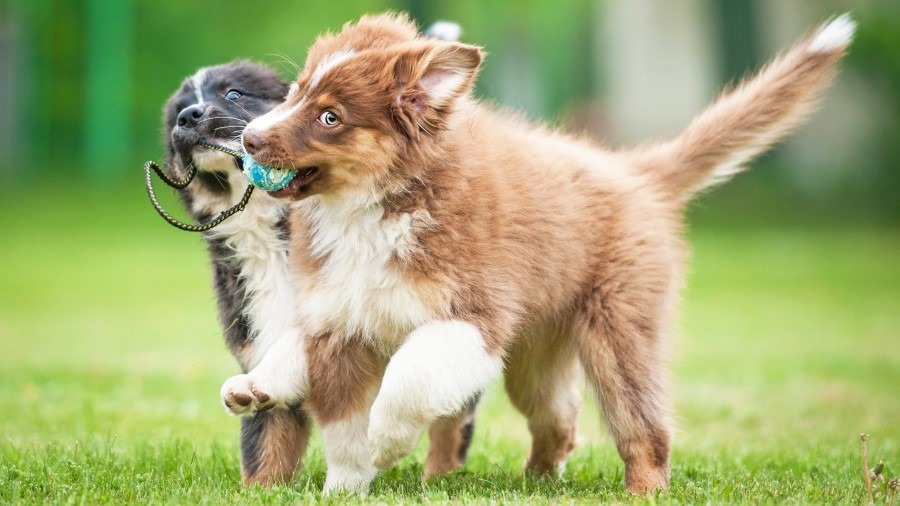Supporting your dog’s recovery after surgery involves navigating a delicate balance between rest and activity. Knowing when to reintroduce playtime can significantly impact their healing process. In this comprehensive guide, we’ll delve into the intricate details of post-operative care, exploring the factors influencing activity restrictions and providing a step-by-step approach to safely reintroducing play after surgery. By understanding these dynamics, you can ensure a smooth and successful recovery for your canine companion.

The Healing Process After Pet Surgery
Pet surgery recovering is a multifaceted journey that encompasses various stages of healing. While each dog’s recovery timeline may differ based on factors such as the type of surgery and their individual health status, certain fundamental principles apply:
-
Surgical Recovery Timeline:
- The duration of your dog’s recovery depends on the complexity of the surgical procedure and their overall health. While some surgeries may require only a brief period of rest, others necessitate more extensive rehabilitation.
- Your veterinarian will provide detailed post-operative instructions tailored to your dog’s specific needs, including recommendations for activity restriction, medication administration, and wound care.
-
Factors Influencing Healing:
- Several factors influence your dog’s healing process, including age, overall health, and the nature of the surgery. Younger dogs generally recover more quickly than older ones, while pre-existing health conditions may prolong the recovery period.
- The type of surgery performed also plays a crucial role. Orthopedic procedures, such as cruciate ligament repair, may require a longer recovery time compared to routine soft tissue surgeries.
How Determine When Is The Time for Play After Surgery?
Deciding when to reintroduce play after surgery requires careful consideration and consultation with your veterinarian. Here’s a step-by-step approach to guide you through the process:
-
Consultation with Your Veterinarian:
- Before allowing your dog to resume play, schedule a follow-up appointment with your veterinarian to assess their progress. Your vet will evaluate the surgical site, monitor healing, and provide guidance on when it’s safe to increase activity.
- Be prepared to discuss any concerns or observations you’ve noted during the recovery period, such as changes in behavior, appetite, or mobility.
-
Monitoring Your Dog’s Progress:
- Throughout the recovery process, closely monitor your dog’s behavior and physical condition for signs of improvement or complications. Look for indicators of healing, such as decreased pain, improved mobility, and a return to their normal routine.
- Conversely, be vigilant for signs of discomfort, swelling, or reluctance to bear weight on the affected limb, which may indicate potential complications requiring further evaluation.
-
Gradual Reintroduction of Activity:
- Once your veterinarian gives the green light, gradually reintroduce low-impact activities such as short walks or gentle play sessions. Avoid activities that involve jumping, running, or rough play, as these may strain surgical incisions or compromise healing.
- Pay attention to your dog’s response to increased activity, and adjust the intensity and duration of play accordingly. It’s essential to strike a balance between promoting mobility and minimizing the risk of injury.
-
Follow-Up Care and Adjustment:
- Schedule regular follow-up appointments with your veterinarian to monitor your dog’s progress and address any concerns that arise. Your vet may recommend modifications to your dog’s rehabilitation plan based on their ongoing assessment.
- Continue to adhere to prescribed medication schedules, wound care protocols, and any additional recommendations provided by your veterinarian to support your dog’s recovery journey.
Sum Up
Allowing your dog to play after surgery is a significant milestone in their recovery process, but it’s essential to proceed with caution and patience. By understanding the healing process, consulting with your veterinarian, and gradually reintroducing activity, you can promote your dog’s physical and emotional well-being while minimizing the risk of complications. Remember to prioritize your dog’s comfort and safety above all else, and seek professional guidance if you have any concerns or questions. With dedicated care and attention, your furry friend will be back to their playful self in no time.
Frequently Asked Questions
When can my dog start playing after surgery?
The timing for reintroducing play after surgery varies depending on the type of procedure and your dog’s individual healing process. It’s essential to consult with your veterinarian for personalized guidance based on your dog’s specific situation.
What types of activities should I avoid during my dog’s recovery period?
It’s crucial to avoid high-impact activities such as running, jumping, and rough play during your dog’s recovery. These activities can strain surgical incisions and impede the healing process.
How can I tell if my dog is ready to play again?
Monitor your dog’s behavior and physical condition for signs of improvement, such as decreased pain, improved mobility, and a return to their normal routine. Consult with your veterinarian if you’re unsure about your dog’s readiness for increased activity.
What should I do if my dog experiences discomfort during play?
If your dog shows signs of discomfort or exhibits unusual behavior during play, such as limping or whining, stop the activity immediately and consult with your veterinarian. It’s essential to address any potential issues promptly to prevent further complications.
Are there any long-term effects of surgery on my dog’s ability to play?
In most cases, with proper post-operative care and rehabilitation, dogs can regain their ability to play and enjoy their favorite activities. However, certain surgeries or underlying health conditions may require ongoing management and adjustments to your dog’s activity level. Your veterinarian can provide guidance on long-term care and support for your furry friend’s well-being.


